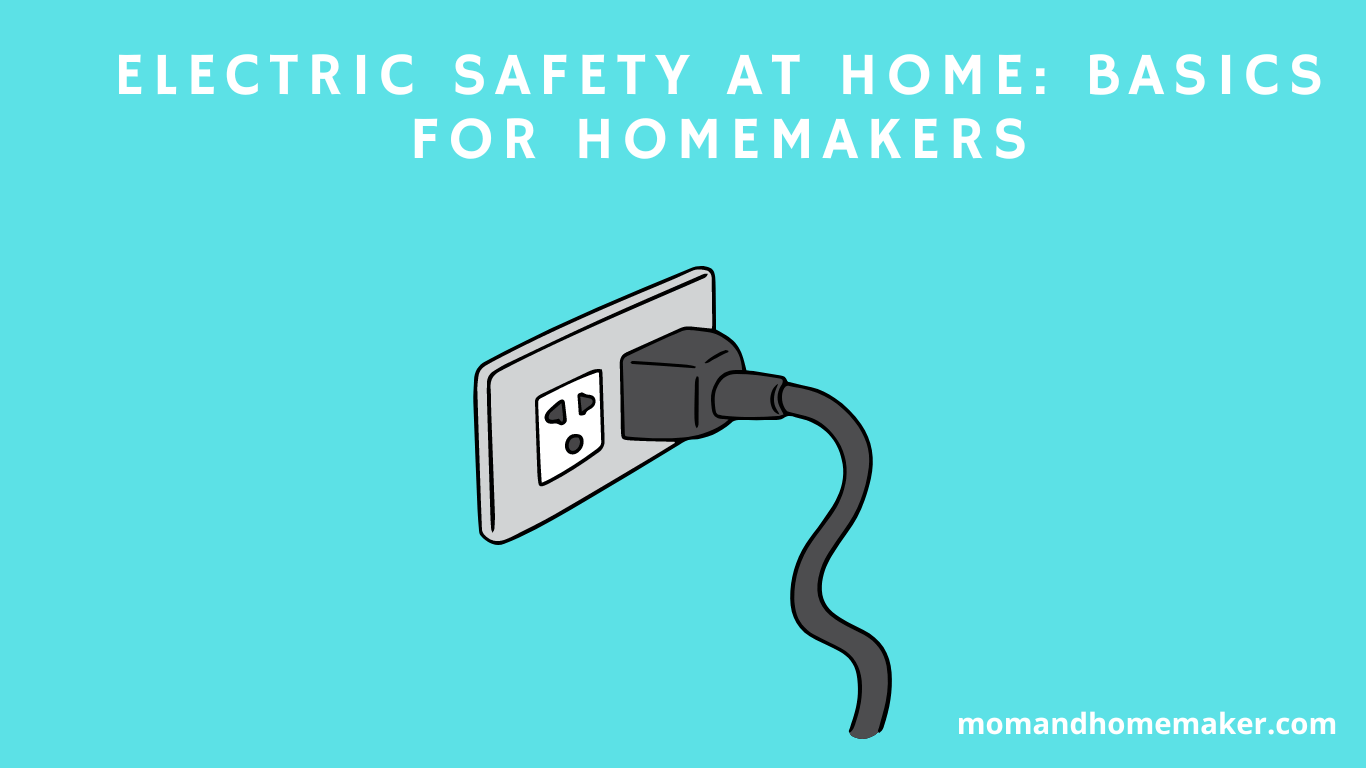For book lovers, there is nothing more satisfying than having a well-curated collection. But as your collection grows, it becomes increasingly difficult to keep track of which books you have and where they are located.
By transforming your book collection with simple organization, you can make sure every book has a place and is easy to locate. From arranging books by genre to using labels and bookmarks, there are countless ways to organize your books in a way that works for you.
As a fellow book lover, I understand the desire to have a well-organized collection that reflects your personality and interests. In this guide, I will walk you through easy steps to assess, sort, declutter, and maintain your books.
I’ll even recommend some helpful digital inventory tools to keep track of your collection.

Assess Your Book Collection
Assessing and organizing my book collection is a task I’ve set out to accomplish. I believe that a well-organized collection reflects my interests and priorities, which is why I find it important.
To begin, I’ll prioritize each book based on its value to me personally. This will help me determine the order in which I read them and ensure that the books I hold dear are easily accessible.
I’ll carefully evaluate the condition of each book. I’ll check for any damages, such as torn pages or broken spines, and decide if they can be repaired or need to be replaced. By taking the time to assess the condition, I can ensure that my collection remains in good shape and provides an enjoyable reading experience.
Managing my inventory is another crucial aspect of organizing my books. I plan to create a detailed list that includes the title, author, and genre of each book. This will help me keep track of what I own and easily locate specific books when I want to revisit them.
Tracking my reading progress is also important to me. To do this, I’ll use a simple system like sticky notes or a reading journal. This will allow me to mark the books I’ve read and jot down any thoughts or reflections. It’s not only a way to keep track of my accomplishments but also a means to deepen my connection with the books I’ve experienced.
I’ll consider donation options for books that no longer align with my interests or priorities. Donating these books to libraries, schools, or local charities is a meaningful way to give back to the community and share the knowledge and joy that books bring.
Set Clear Goals
To achieve an organized book collection, it’s important to establish clear goals. Setting achievable and trackable goals is crucial for making progress and staying motivated throughout the organization process.
By prioritizing and categorizing your books, you can create a system that allows for easy navigation and retrieval. To illustrate the importance of setting clear goals, here are some actionable steps you can take:
- Prioritize and categorize your books: Sort them by genre or author to create a more organized collection.
- Create a designated reading space: Set up a cozy reading nook with comfortable seating and good lighting for a comfortable and enjoyable reading experience.
- Involve friends or family in the process: Arrange a book swap or organize a party to make the task more fun and collaborative.
To enhance your reading experience, consider creating a designated reading space where you can fully immerse yourself in the stories and knowledge within your collection. It can be enjoyable and foster a sense of belonging to involve friends or family in the process, of working together to achieve your goals.
Finding creative storage solutions can also maximize space and add aesthetic appeal to your organization efforts.
Determine Your Sorting Method
When organizing my book collection, it was helpful to start by determining my sorting method. There are different ways to sort your books, and it’s important to find the one that works best for you. Organizing your books can bring order and a sense of belonging to your space, making it easier to find what you’re looking for and creating an appealing display.
One popular sorting method is organizing books by color. This creates a beautiful and vibrant aesthetic, especially if you have a diverse collection with books of different colors. Another option is organizing books by size, which creates a neat and uniform look on your shelves.
Regardless of the sorting method you choose, there are a few tips for staying organized. First, label your shelves or use bookends to keep books in place. This will help you maintain the organization over time. Regularly declutter your collection by donating or selling books you no longer need. This prevents your collection from becoming overwhelming and ensures you only keep books that bring you joy.
Declutter and Purge Unwanted Books
When organizing my book collection, decluttering and purging unwanted books are important steps to create a more streamlined and purposeful collection. Accumulating books over time is natural, but holding onto every single one can lead to a cluttered and overwhelming space.
To begin the decluttering process, consider donating your unwanted books to organizations that accept book donations. This not only gives your books a new home but also allows you to contribute to a cause you believe in.
Another option is to upcycle your old books into creative projects like wall art or decorative objects. If you want to recoup some of your investment, you can sell your unwanted books on various online platforms, giving you a chance to earn extra money.
For those who prefer digital book organization, converting physical books into a digital format is a space-saving and easily accessible option.
Lastly, book swaps are a fantastic way to exchange books with like-minded individuals, fostering a sense of community and shared interests.
Clean and Repair Your Books
Once you’ve decluttered and gotten rid of unwanted books, it’s important to make sure that the ones you’re keeping are well-maintained. Cleaning and repairing your books not only helps them last longer but also enhances their appearance. Here are some simple techniques and tips to help you transform your book collection:
To start, gently dust the book covers and pages using a soft, dry cloth or a feather duster. If there are any stains or spills on the covers, lightly dampen a cloth with water and carefully wipe the affected area. Be cautious not to saturate the cover or pages. For sticky residue or labels, you can use a small amount of rubbing alcohol on a cloth to remove them.
When it comes to book restoration, if you have loose pages, you can reattach them using acid-free glue or archival tape. Be sure not to use too much adhesive, as it can damage the paper. If you have torn covers, mend them using clear book repair tape or archival glue. Place a heavy object on top to ensure a secure bond.
In terms of organizing supplies, consider using bookends to keep your books upright and organized. You can also use bookplates to label your books with your name and bookmarks to mark your favorite pages. For rare books, it’s important to store them properly. Keep them away from direct sunlight, extreme temperatures, and high humidity. Acid-free archival boxes or special bookshelves can provide added protection.
To preserve your book covers, avoid exposing them to moisture or harsh cleaning chemicals. Consider using a clear plastic cover or book jacket to protect them from dust and fingerprints.
Choose an Organizational System
Now that we’ve cleaned and repaired our books, let’s discuss how to choose an organizational system to keep them in order. When organizing our book collection, there are several options to consider.
One popular choice is creating a digital catalog. A digital catalog offers numerous benefits such as easy searching for specific books, efficient collection tracking, and the ability to share the catalog with others.
Another consideration is organizing books based on their formats. Hardcover and paperback books can be placed on bookshelves, while magazines and comic books can be stored in magazine holders or baskets. This ensures that each format is stored appropriately and can be easily accessed when needed.
For those seeking a creative touch in their book organization, organizing books by color is an option. This not only creates an aesthetically pleasing display but also facilitates locating a book based on its cover color.
Incorporating personal memorabilia is another unique approach to book organization. You can use bookends that showcase favorite photographs or souvenirs, or even place small trinkets or notes inside the books themselves. This adds a personal touch and makes your collection truly unique.
Lastly, if you have a large book collection but limited space, there are strategies to maximize your storage. Utilize vertical space by adding additional shelves or investing in tall bookcases. Consider using under-bed storage or wall-mounted bookshelves to free up floor space.
You can also rotate your book collection seasonally, storing some books away and bringing others out to keep things fresh.
Categorize Your Books by Genre
To categorize my books by genre, I started by sorting them into different sections based on their themes and subjects. Organizing books by genre offers several benefits.
It allows for easy browsing and quick access to books of a particular genre. When I’m in the mood for a thriller, I know exactly where to find my collection of suspenseful novels.
Organizing books by genre improves accessibility. Guests or family members can easily find a book they’d like to borrow without having to search through the entire collection.
Here are some tips for categorizing books effectively by genre.
Create clear labels or signs for each genre section. This helps visitors locate the books they’re interested in without confusion.
Consider subcategorizing within each genre to further refine the organization. For example, within the fantasy genre, you could create sections for high fantasy, urban fantasy, and young adult fantasy.
Regularly review your collection and update the categories as needed to keep everything organized.
Organizing books by genre has had a significant impact on my reading habits. It has made it easier for me to choose a book based on my mood or interests. It has also made it more enjoyable to browse through my collection, as I can easily find books that align with my preferences.
Alphabetize Your Books by Author
Organizing your book collection by alphabetizing the books by author is an important step. This method offers several benefits.
It makes browsing and finding books by your favorite authors a breeze. Instead of sifting through a chaotic mess of books, you can quickly locate the section dedicated to the author you’re interested in and easily spot the desired book.
Alphabetizing helps maintain an organized collection by providing a consistent system. By arranging the books in alphabetical order, you create a structure that allows you to keep track of what you have and what you still need to add to your collection.
Alphabetizing by author gives your book collection a cohesive and polished look, transforming it into a curated library.
To alphabetize your books by author, you can use different methods. One option is to arrange them by the author’s last name followed by their first name. Another method is to sort them by the author’s first name followed by their last name.
Alternatively, you can simply alphabetize them by the author’s last name only. Choose the method that works best for you and your collection.
To maintain an organized book collection, consider these helpful tips. Make sure to regularly update your collection as you add new books. This will keep your collection current and organized.
Use bookends or dividers to separate sections for each letter of the alphabet. This will make it easier to locate books by specific authors.
Keeping an inventory or catalog of your books can be a great way to track what you own and ensure nothing gets misplaced.
Utilize Bookshelves and Storage Solutions
Arranging your books by author and alphabetizing them is a good start for organizing your collection. However, to truly transform your book collection, it’s important to use bookshelves and storage solutions.
Not only do bookshelves provide practical storage, but they also add a touch of elegance and sophistication to any space. By curating your books on these shelves, you can create a visually appealing arrangement that showcases your collection.
Using bookshelves and storage solutions not only enhances the aesthetic appeal of your books but also helps with their maintenance. By keeping them neatly organized, you can prevent damage, bending, or loss. It also makes it easier to find the book you need when you want to read or reference it.
To take your book organization to the next level, consider creating a digital inventory of your collection. This will help you keep track of your books, categorize them, and locate them easily. There are various apps and software available that can assist you with this process, making it efficient and convenient.
Consider Different Display Options
When considering different display options for your book collection, it’s important to explore creative ways to showcase your books while adding a personal touch to your space.
By arranging and displaying your books in unique ways, you can make your collection stand out and reflect your individual style. One option is to group books by color, size, or genre to create visually appealing and organized displays that catch the eye.
You can also think outside the box and use unconventional shelving like repurposed ladders, crates, or old suitcases to add personality and create an eclectic look.
Another great option is wall-mounted book racks, which save floor space and create a modern and sleek display. Floating bookshelves are also popular because they give the illusion of books floating on the wall, creating a visually stunning effect.
Whichever option you choose, consider your personal style and the overall aesthetic of your space. Transforming your book collection into a unique and visually appealing focal point in your home is easy when you think creatively about your display choices.
Enhance Your Collection With Decorative Elements
If you want to give your book collection a special touch, consider adding decorative elements that reflect your personal style and add flair. By carefully selecting and arranging these elements, you can turn your bookshelf into a captivating display that showcases your individuality.
Here are some ideas to enhance your collection:
- Bookshelf arrangement: Organize your books by theme, genre, or color to create a visually pleasing display.
- Color coordination: Coordinate the colors of your book covers to create a cohesive and eye-catching arrangement.
- Book cover displays: Showcase your favorite book covers facing outward for a personal and artistic touch.
- DIY bookends: Get creative and make your own unique bookends using materials like wood, metal, or repurposed objects.
Incorporating these decorative elements not only adds beauty to your book collection, but also gives you a sense of pride and ownership. It’s a way to express your personality and create a space that feels uniquely yours.
Create a Reading Nook or Cozy Corner
Transforming your book collection into a cozy corner or reading nook is a great way to enhance your reading experience. Let’s explore how you can create a comfortable and inviting space that’s uniquely yours.
Finding the right seating option is crucial. Look for a cozy armchair or a plush loveseat that allows you to relax and unwind as you dive into your favorite books. Opt for comfort and support to ensure a pleasant reading experience.
In addition to comfortable seating, natural lighting plays a significant role in creating a cozy reading nook. Position your seating near a window to take advantage of ample sunlight. Natural light not only creates a warm and inviting atmosphere but also reduces strain on your eyes while reading.
To personalize your reading nook, incorporate decorative accents that reflect your style and personality. Consider adding throw pillows or a soft blanket to make your seating area even more inviting and cozy. You can also enhance the ambiance by including plants, artwork, or a small bookshelf.
By creating a reading nook or cozy corner, you’ll transform your book collection into a sanctuary where you can escape and immerse yourself in the world of literature. It’s a space that will make you feel a sense of belonging and provide solace from the outside world.
Implement a Borrowing and Lending System
Implementing a borrowing and lending system is a convenient way to manage my book collection. This system allows me to share my books with others while also gaining access to a wider range of titles. It embraces the sharing economy and fosters a sense of community among fellow book lovers.
To effectively implement a borrowing and lending system, it’s important to establish a tracking system. This can be as simple as creating a spreadsheet or using a book tracking app to keep track of who’s borrowed which books and when they’re due to be returned. This ensures that everyone is aware of the status of their borrowed books and helps maintain organization.
In a book club or a group of friends, the benefits of a borrowing and lending system are even greater. It allows members to easily share and discuss books, expanding their reading horizons and fostering meaningful conversations. However, it’s important to establish lending etiquette to ensure that everyone’s books are respected and returned promptly.
Creating a library within a community or neighborhood is another way to implement a borrowing and lending system. It can be a physical space where people can come and borrow books, or it can be a virtual library where books are shared digitally. This creates a sense of belonging and encourages a culture of reading and learning within the community.
Maintain Regular Book Maintenance
Maintaining regular book maintenance is essential for preserving the condition of your books and ensuring they can be enjoyed by yourself and others. It goes beyond simply organizing them on shelves; it involves taking care of them to ensure their longevity.
Proper book storage is crucial in preventing damage from dust, sunlight, and humidity. To preserve their quality, keep your books in a dry and cool environment, away from direct sunlight.
Regular book maintenance includes dusting the shelves and wiping the covers to keep them clean and free from dirt. It’s also important to periodically check for signs of wear and tear, such as loose bindings or torn pages, and address them promptly to prevent further damage.
Creating a visually appealing book display can be a great way to showcase your collection. Consider arranging them by genre, author, or color for an aesthetically pleasing presentation.
To keep your book collection organized, maintaining a book inventory is helpful. This can be as simple as keeping a list of the books you own, including details such as title, author, and publication year. Having an inventory makes it easier to track your collection and avoid accidental duplicate purchases.
Keep a Digital Inventory of Your Collection
I keep a digital inventory of my book collection. It’s important because it helps me stay organized and keep track of all the books I own.
With digital tracking, I can easily manage my inventory and know exactly which books I’ve and where they’re located. There are various inventory management tools and tracking software available that make it simple to create a digital catalog of my books.
These tools allow me to input information about each book, like the title, author, genre, and even the condition. There are book organization apps that offer features like barcode scanning, which makes adding books to my digital inventory even easier.
With a digital inventory, I can quickly search for a specific book, see if I already own it, and easily locate it on my bookshelf. It gives me a sense of belonging and helps me keep my collection organized and accessible.
Explore Online Book Organization Tools
When it comes to organizing my book collection, I’ve discovered the value of online tools designed specifically for this purpose. These tools offer a range of features that simplify the process and enhance my reading experience.
One particularly useful feature is online book recommendations. These tools analyze my reading habits and preferences to suggest books that align with my interests. This saves me valuable time and ensures that I always have a diverse and captivating selection of books at my fingertips.
Another feature that I appreciate is the ability to track my reading progress. These tools allow me to mark books as read, currently reading, or to-be-read, and even track the number of pages or hours I’ve spent reading. This not only helps me stay organized, but also provides a sense of accomplishment as I witness my progress grow.
In addition, these online tools often offer collaborative book clubs, providing me with the opportunity to engage in discussions with fellow book lovers. This sense of community enables me to share my thoughts and insights on the books I’ve read, fostering a deeper connection with others who share similar reading interests.
Virtual bookshelf communities are also a fantastic feature. They allow me to showcase my book collection and connect with like-minded individuals. I can explore their virtual bookshelves, receive recommendations, and even borrow or lend books, creating a vibrant and interactive reading community.
For those who prefer digital reading, these tools offer ebook organization tips. They provide options to categorize ebooks by genre, author, or series, making it effortless to find and access my digital library.
Enjoy Your Newly Organized Book Collection
Now that my book collection is beautifully organized, I can fully enjoy the pleasure of reading. It’s incredible how a well-organized collection can enhance the reading experience. Not only can I easily find the book I want to read, but I also feel a sense of pride and accomplishment every time I look at my neatly arranged shelves.
To maintain the organization of my books, I’ve discovered some new ways to organize them and found creative storage solutions. One of my favorite DIY book organization tips is to use decorative baskets or bins to store books that I want to keep but don’t necessarily want on display. This keeps my shelves clutter-free and adds a stylish touch to my space.
In addition to the practical aspect of organizing books, displaying them in creative ways brings joy and a sense of belonging. Here are some book display ideas that I’ve implemented in my collection:
- Color-coded bookshelves: Arrange books by color for a visually striking impact.
- Floating bookshelves: Mounting shelves on the wall for a modern look.
- Stackable book crates: Using wooden crates to create a rustic display.
Conclusion
Transforming your book collection is more than just sorting through your books and arranging them on your shelves. It’s about creating a space that reflects your personality and inspires you to read more. By using creative organization techniques such as color-coding, creating collections, and adding decorative touches, you can create a space that is both functional and beautiful.
Take the time to experiment with different organization methods until you find one that works for you and your collection. With a little innovation and creativity, you can transform your bookshelves into a showstopping display that you’ll be proud to show off to everyone who visits your home.
















